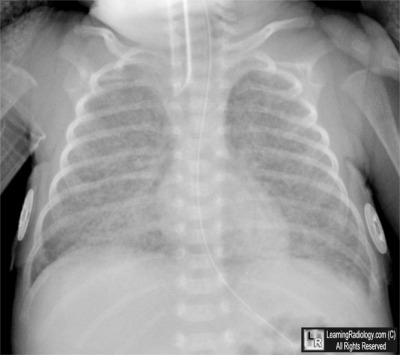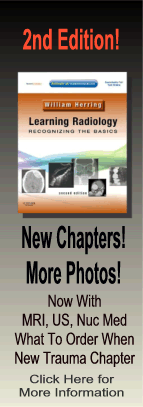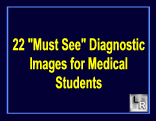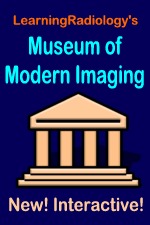| Cardiac | |
|---|---|
| GI | |
| Bone | |
| GU | |
| Neuro | |
| Peds | |
| Faculty | |
| Student | |
| Quizzes | |
| Image DDX | |
| Museum | |
| Mobile | |
| |
Misc |
| Videocasts | |
| Signs | |
Learning
Radiology:
Recognizing
the Basics
Available
on the Kindle
and IPad
LearningRadiology Imaging Signs
on Twitter
![]()
Follow us on
What is the most likely diagnosis?
- 4 week old premature infant

Frontal Radiograph of the Chest
- Transient tachypnea of the newborn
- Diaphragmatic hernia
- Bronchopulmonary dysplasia
- Congenital adenomatoid malformation
- Meconium aspiration syndrome
No additional images
![]()
Additional Images
None
![]()
Answer:
3. Bronchopulmonary dysplasia
More (Click Discussion Tab)
Bronchopulmonary dysplasia
General Considerations
- First described as a chronic lung disease seen in premature newborns treated for respiratory distress syndrome (RDS) with supplemental oxygen and mechanical ventilation for at least one week
- It is now recognized that bronchopulmonary dysplasia (BPD) may complicate other types of neonatal lung disorders such as meconium aspiration syndrome and pneumonia
- Common to almost all causes is oxygen administered under positive pressure
MORE . . .
.
This Week
4 week old premature infant |
Some of the fundamentals of interpreting chest images |
The top diagnostic imaging diagnoses that all medical students should recognize according to the Alliance of Medical Student Educators in Radiology |
Recognizing normal and key abnormal intestinal gas patterns, free air and abdominal calcifications |
Recognizing the parameters that define a good chest x-ray; avoiding common pitfalls |
How to recognize the most common arthritides |
LearningRadiology
Named Magazine's
"25 Most Influential"

See Article on LearningRadiology
in August, 2010
RSNA News
| LearningRadiology.com |
is an award-winning educational website aimed primarily at medical students and radiology residents-in-training, containing lectures, handouts, images, Cases of the Week, archives of cases, quizzes, flashcards of differential diagnoses and “most commons” lists, primarily in the areas of chest, GI, GU cardiac, bone and neuroradiology. |



